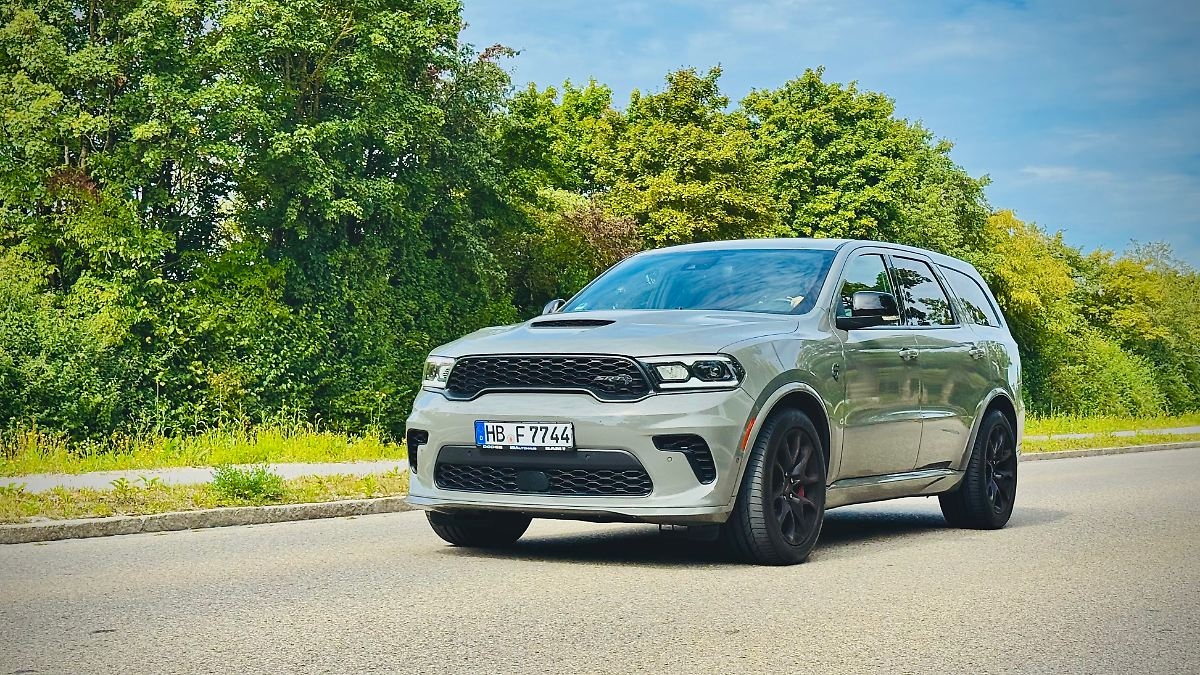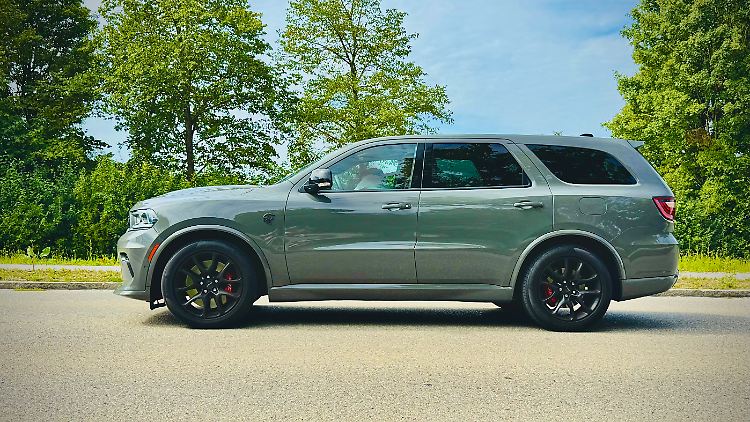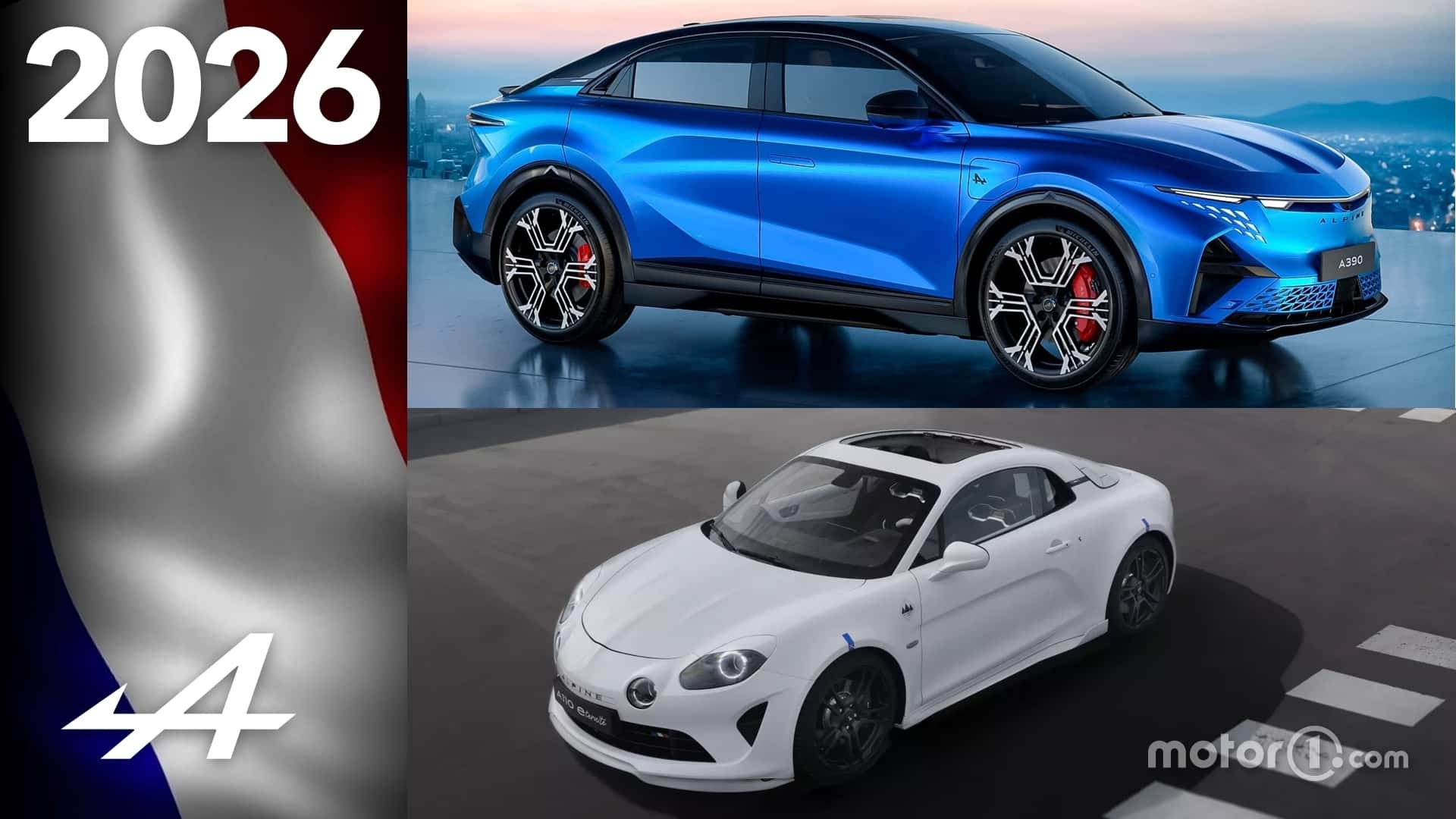290 km/h wall of bricks: Dodge Durango Hellcat V8 Hemi - the beast lives on.

The sporty grey paint suits the large Dodge Durango Hellcat. The black honeycomb grille and matching black 20-inch wheels guarantee a sporty look.
(Photo: Patrick Broich)
The Dodge Durango Hellcat is pretty much the antithesis of the much-touted electric mobility: loud, rugged, and a bit raw. But also emotional and cool. ntv.de took the huge, turbocharged V8 for a spin.
Even a quick glance at the Dodge Durango reveals its age: it's no longer a brand-new car. And once you're inside, it becomes even clearer. The architecture, instrument cluster, switchgear – the basic structure dates back to 2010, and any hint of modernity is thanks to facelifts. But what some dislike, others celebrate. The cockpit has a classic feel, is intuitive and simple to use thanks to its predominantly physical buttons. And while the driver's eyes do fall on the display, the classic speedometer scale hasn't yet become obsolete.
And what about the exterior? The Durango makes a menacing appearance, especially in its Hellcat guise. With its sporty attire, including the pronounced front spoiler, even this 5.11-meter behemoth manages to appear somewhat agile. And the hood scoop is a symbol of power. Meanwhile, the pastel, solid gray paint color, perfectly in keeping with modern sports car culture, suits the aging American classic.

Many users love the convenience of physical buttons, and there are plenty of those. Nevertheless, the all-wheel-drive vehicle also offers a wide range of infotainment options.
(Photo: Patrick Broich)
But what exactly is this enormous Hellcat? Sports car or workhorse? Or a comfortable long-distance cruiser for large families? At least the seats aren't uncomfortable, and the legroom can certainly be considered acceptable. Even the second row is spacious, which isn't unusual for a vehicle of this size. But the individual seats are in a different league altogether, though in this context they do evoke a bit of the American minivan tradition. Only the seats in the third row are more suited to occasional use, but that's perfectly fine.
Hellcat is pure character.Speaking of character: This becomes apparent quickly after the first few meters. The very essence of the Hellcat hinges on the hellish engine beneath its mighty hood. What was that saying again? There's no substitute for cubic inches, except more cubic inches? Aside from the fact that this exceptional Durango is anything but stingy with its 6.2-liter displacement, the manufacturer adds a supercharger on top. The result is 719 hp and 889 Nm of torque, transforming even a brick wall into a dynamic beast.

At 5.11 meters, the Ami is not as long as one might think.
(Photo: Patrick Broich)
But only in a straight line! This means you can even compete in a drag race without any tuning, where it all comes down to how the car performs on the quarter mile. ntv.de doesn't conduct any measurements, of course, but the Hellcat really does accelerate so fiercely from a standstill under full load, and thanks to all-wheel drive, without any wheelspin (3.6 seconds to 100 km/h), that you should warn your passengers about such an event if you don't want to risk any displeasure. And it's best to take along people with strong stomachs.
Anyone familiar with this engine from various coupes or sedans – think Challenger and Charger – might consider it a waste of power in the Durango. Sure, the V8 is hard to tame, but when climbing a highway incline at high speed, you do notice that the power has its limits. Yes, the SUV certainly delivers tremendous acceleration, but there are more forgiving cars for cruising at 290 km/h.
But this is precisely where it becomes wonderfully absurd: the Durango Hellcat is actually listed as having a top speed of 290 km/h in its registration documents. However, driving at that speed isn't exactly recommended, as the suspension doesn't offer the best straight-line stability, and if there's a crosswind involved – it's best to slow down considerably. And then, of course, those 2.7 tons need to be brought to a halt. And many highways during the day aren't as empty as the A2 towards Berlin at 3 a.m.

Plenty of space in the second row and comfortable individual seats are available for American-style travel.
(Photo: Patrick Broich)
The question remains whether this all-wheel-drive vehicle is suitable as a refined tourer. At least as a characterful tourer with a pleasant atmosphere on board and decent comfort despite the massive 20-inch wheels. It must be said, however, that the Hellcat appeals more for its sound and appearance than for its versatility. In other words: you buy it because of its addictive roar, its cool presence, and its powerful acceleration when desired – not because it's a quiet precision instrument with ample storage space. It does, however, have massive storage space, swallowing 2,400 liters of luggage with the rear seats folded down and capable of towing 3.5 tons, making it a true workhorse and not just a show-off on the track. And it remains a statement by and for petrolheads who clearly oppose emotionless mobility and thus live the American automotive dream.
Dodge itself is certainly experimenting with electric mobility, but the V8 seems to be experiencing a renaissance here, because it's difficult to explain to certain fans why they should forgo their rolling cultural heritage – and rightly so! It's great that the Durango Hellcat is also available in Germany – not directly through Stellantis, but importers like KW Auto ensure that you can acquire a vehicle that's road-legal here. A network of one hundred dealerships in 17 European countries provides a certain level of coverage.

No sign of fancy LED taillights. The Durango is no longer the newest model.
(Photo: Patrick Broich)
A Durango Hellcat isn't exactly a cheap purchase – prices start at €136,189. And you really have to love it, because the materials and build quality are nowhere near the level of German manufacturers in this price range – but that's just part of the American passion for cars. Anyone who already knows they'll be putting a lot of miles on their object of desire should consider the LPG system, available for an additional €3,570. Even though fuel consumption with LPG is considerably higher (around 20 percent), you'll save a substantial amount of money after 40,000 kilometers. The savings amount to about €100 per thousand kilometers, based on current fuel prices and assuming a real-world consumption of 19 liters per 100 kilometers. And you'll certainly need that much fuel if you want the car to deliver the driving pleasure it provides. Liquefied petroleum gas costs around one euro per liter, while for super unleaded gasoline, prices can reach 1.70 euros per liter or even more, depending on location and time.
Sure, the most powerful Durango isn't exactly a sensible car, but it's a refreshing alternative in the electric age for automotive individualists with a weakness for displacement. It's nice that such a thing still exists.
Source: ntv.de
n-tv.de





